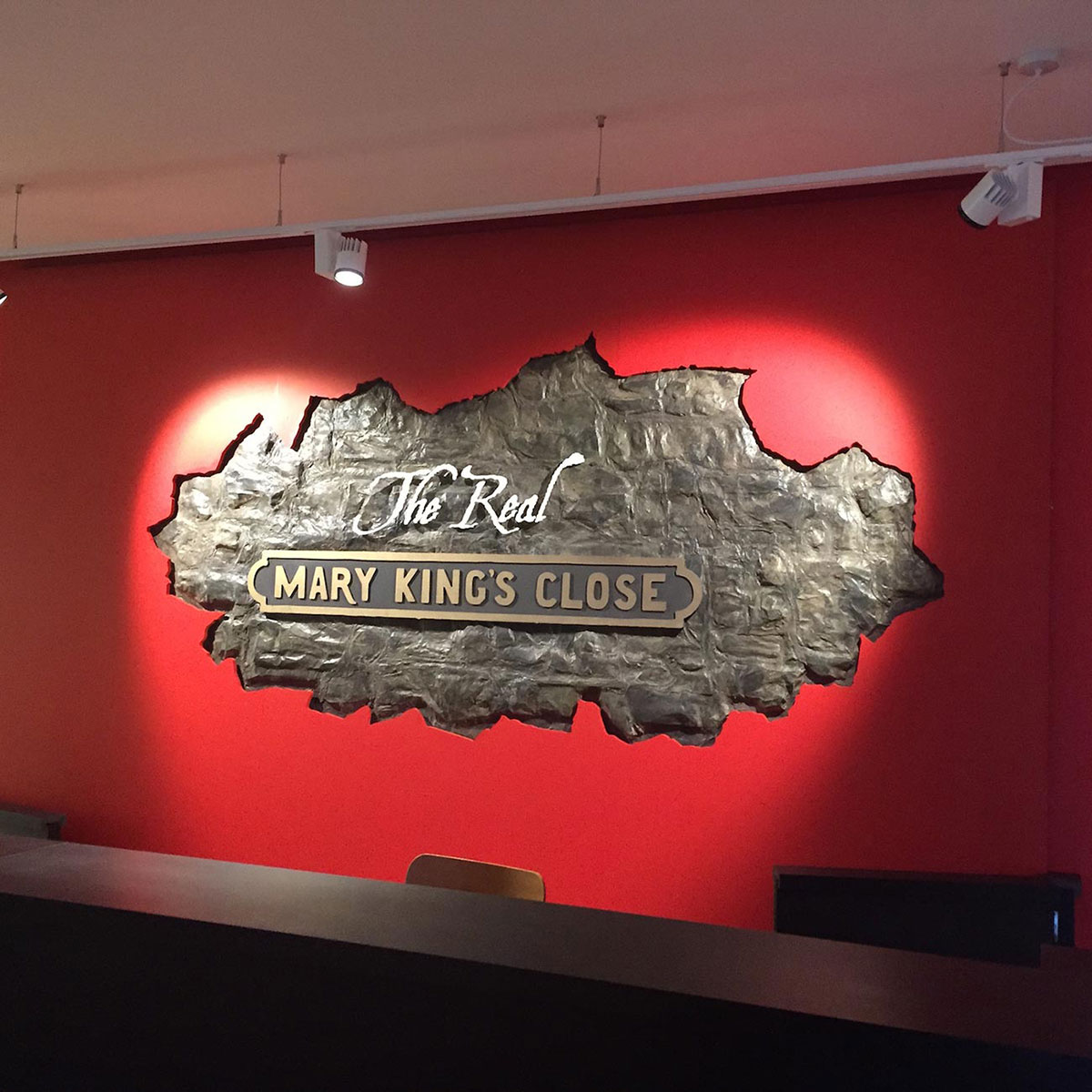We’ve enjoyed working on the interior of the new Mary King’s Close entrance!
Mary King’s Close is a historic close located under buildings on the Royal Mile, in the historic Old Town area of Edinburgh, Scotland. It took its name from one Mary King, a merchant burgess who resided on the Close in the 17th century.
For more information, please visit their website – The Real Mary King’s Close
The History of Mary King’s Close in Edinburgh
Mary King’s Close, one of Edinburgh’s most intriguing historical sites, offers a fascinating glimpse into the city’s past. Located beneath the Royal Mile, this series of narrow streets and hidden alleys provides a unique insight into the lives of the people who lived and worked there centuries ago. The close is named after Mary King, a merchant burgess who resided there in the 17th century.
Early Beginnings
The origins of Mary King’s Close date back to the 16th century. Originally part of the maze of closes and wynds that made up Edinburgh’s Old Town, it was a bustling area where residents lived in multi-story tenements. These buildings, known as “lands,” were densely packed, with the lower floors occupied by businesses and the upper floors serving as residential spaces.
Mary King’s Legacy
Mary King was a prominent resident in the 1630s. As a widowed merchant, she owned several properties in the close. Her name became associated with the area, reflecting her status and the prominence of her family. Despite the close’s later reputation for poverty and disease, Mary King herself was relatively well-off, and her association with the area underscores the social diversity that existed within Edinburgh’s Old Town.
The Plague of 1645
One of the most notorious periods in the history of Mary King’s Close was the outbreak of the plague in 1645. The close, like many parts of Edinburgh, was hit hard by the epidemic. The densely packed and unsanitary living conditions facilitated the rapid spread of the disease. Many residents succumbed to the plague, and their suffering has become a central part of the close’s dark history. Stories of bodies being walled up or entire families perishing within their homes contribute to the eerie reputation of the site.
Sealing and Rediscovery
By the 18th century, Edinburgh faced severe overcrowding. To address this, the city council decided to construct the Royal Exchange (now the City Chambers) on top of Mary King’s Close and several surrounding closes. This required partially demolishing and then sealing off these underground spaces. Over time, Mary King’s Close became a forgotten relic, buried beneath the bustling streets of the growing city.
The close remained largely hidden until the late 20th century when it was rediscovered during renovation works. Archaeologists and historians began to uncover the stories of those who lived there, leading to a renewed interest in the site.
Modern Era and Tourism
Today, Mary King’s Close is a popular tourist attraction, offering guided tours that explore its haunted reputation and historical significance. Visitors can walk through the preserved streets and rooms, learning about the daily lives of past residents and the dark events that took place there. The tours provide a blend of history and legend, making the close one of Edinburgh’s most captivating destinations.
The close’s reputation for being haunted adds to its allure. Tales of ghostly apparitions and unexplained phenomena are common, with many visitors reporting eerie experiences. This paranormal aspect, combined with the tangible history of the close, creates a unique and compelling atmosphere.
Conclusion
Mary King’s Close stands as a poignant reminder of Edinburgh’s rich and often tumultuous history. From its origins as a bustling neighborhood to its years of abandonment and eventual rediscovery, the close encapsulates the resilience and complexity of the city. Today, it serves as a window into the past, allowing visitors to step back in time and experience the life and legends of old Edinburgh.


